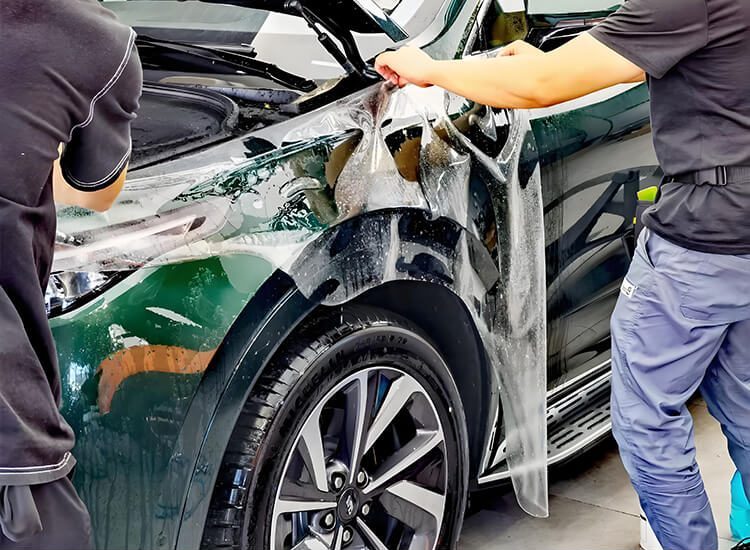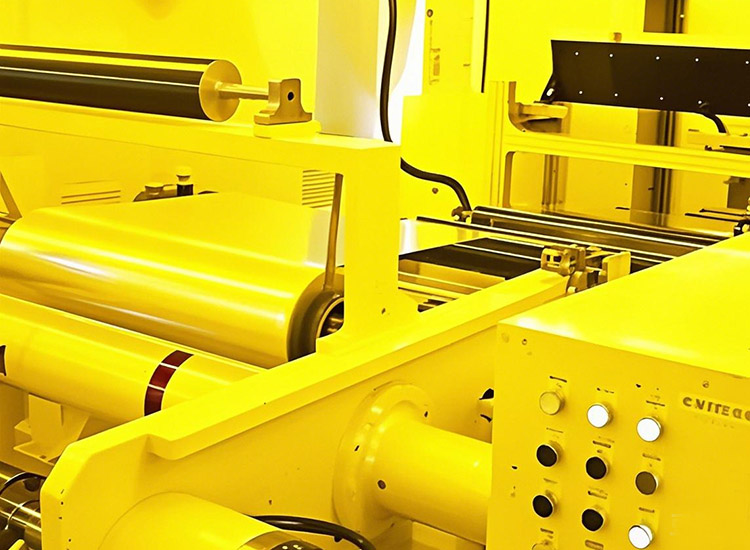What Is Paint Protection Film Made Of: Materials Explained
When it comes to protecting your car’s paint, few solutions are as effective and long-lasting as Paint Protection Film. But what exactly is this invisible shield made of? For many car owners, understanding the paint protection film material is the first step toward making an informed purchase. This article breaks down the ingredients, structure, and differences between PPF types so that you know exactly what you’re getting—and why it matters. Whether you’re considering clear bra film for your new Tesla or trying to decide between TPU vs PVC in paint protection film, we’ve got you covered.
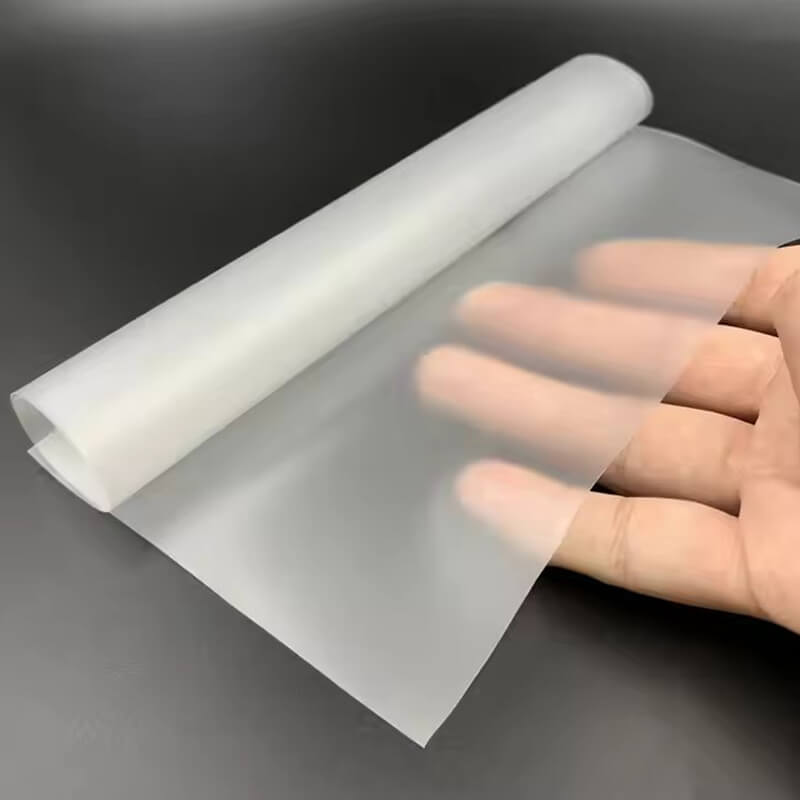
What Is Paint Protection Film Made Of?
At its core, Automotive PPF is a multi-layered polyurethane-based film designed to guard a vehicle’s paintwork against rock chips, scratches, bug splatter, bird droppings, and UV damage. Most modern PPF is made of TPU (Thermoplastic Polyurethane), though cheaper variants might use PVC (Polyvinyl Chloride) or TPH (a hybrid material).
Key PPF Components
A typical PPF has 3 to 4 distinct layers:
- Topcoat Layer: Often infused with self-healing polymers, this layer repairs light swirls and scratches with heat exposure (sunlight or warm water).
- Clear Coat: Enhances gloss, UV resistance, and stain protection.
- Base Polyurethane Layer: This is the core PPF material, usually TPU, known for flexibility, strength, and optical clarity.
- Adhesive Layer: A pressure-sensitive glue that sticks to the car’s surface without damaging the paint.
So when asking what materials are used in paint protection film, you’re really asking about these four layers and how they work together to provide protection.
TPU vs PVC vs TPH: Which Type of PPF Is Best?
Not all films are created equal. Understanding the chemical composition of paint protection film can make or break your long-term satisfaction.
TPU-Based PPF
- Self-healing properties
- High elasticity for wrapping around curves
- Resistance to yellowing and cracking
- Better optical clarity
- Eco-friendlier composition
PVC or TPH-Based PPF
- Stiffer and less flexible, making installation more difficult
- Yellowing over time
- No self-healing layer
- Lower durability
If you’re wondering whether PPF film made of TPU or PVC is better, TPU wins by a wide margin for daily drivers and high-end vehicles.
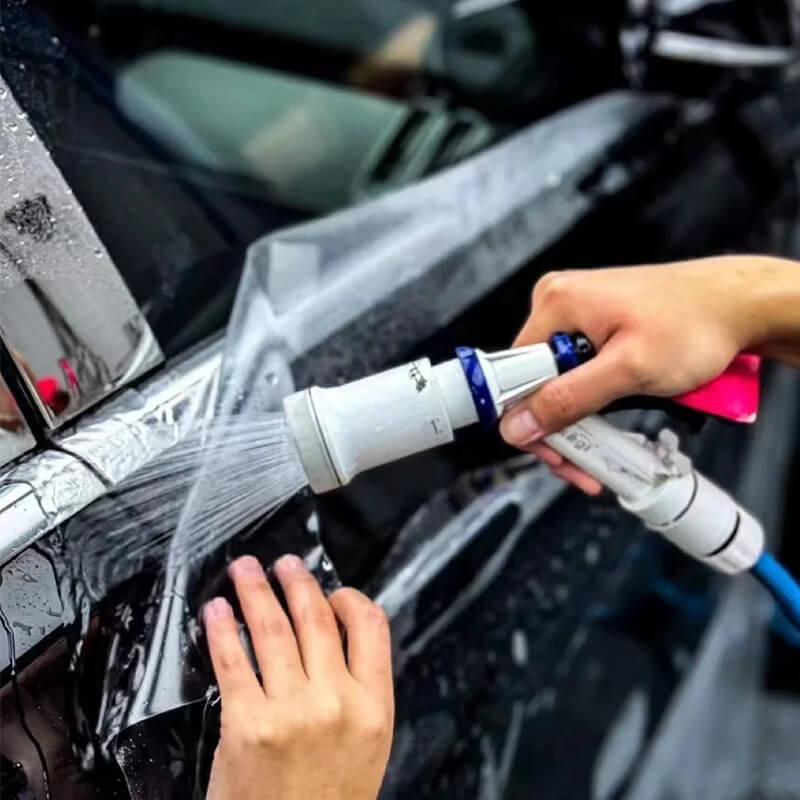
How Many Layers Does PPF Have?
This is a commonly asked question: How many layers does PPF have? As mentioned, most high-quality PPFs have at least three core layers, but the number may vary depending on the manufacturer and film type. Some premium PPFs include an additional ceramic-infused layer for enhanced hydrophobic properties.
The PPF base layer and top coat explained:
- Base Layer (TPU): Absorbs impacts and resists tears.
- Top Coat: Acts like a sacrificial barrier that resists light scratches and contaminants.
The Evolution of PPF Construction
First developed by the U.S. military in the 1960s to shield helicopter rotor blades from flying debris during the Vietnam War, PPF has since evolved significantly. Today’s automotive films are clearer, stronger, and more adaptive than ever before. PPF construction now includes nano-ceramic top coats, UV stabilizers, and even antimicrobial coatings.
When someone asks, “Is PPF made of plastic?” the answer is nuanced. Yes, it’s made from advanced plastic polymers like TPU, but it’s engineered far beyond typical plastic materials.
Paint Protection Film vs Ceramic Coating: Material Matters
Many people compare PPF vs ceramic coating material, but the two are fundamentally different. Ceramic coatings are liquid-based and bond with the paint chemically. They offer hydrophobicity but little physical protection. On the other hand, Paint Protection Film layers physically block rock chips, scratches, and more.
A well-informed buyer might use both—a PPF layer underneath for impact resistance, and ceramic coating on top for ease of cleaning.
Understanding Clear Bra Material in Detail
PPF is also called Clear bra, especially in North America. Clear bras were initially thicker and less flexible, usually made from PVC-based car film material. Modern versions, however, are often synonymous with TPU-based paint protection film, offering far superior performance.
If you’re doing a PPF materials comparison, note that clear bra material is often an outdated term unless referring to legacy products.

Self-Healing PPF: Science Behind the Magic
One of the most appreciated innovations is the self-healing PPF film materials. These contain elastomeric polymers that react to heat by returning to their original form, effectively erasing minor scratches.
Heat-activated self-healing usually kicks in at around 110°F (43°C), making your car look freshly detailed just by sitting in the sun. This function is especially crucial for luxury cars or vehicles frequently parked outdoors.
PPF Film Hardness and Flexibility
Balancing PPF film hardness with flexibility is essential. TPU offers a perfect mix—it’s hard enough to resist scratches but flexible enough to install around curves and edges. PVC tends to be too rigid, while TPH films sit somewhere in between but may lack longevity.
How to Choose the Right Type of PPF for Your Car
There are various types of paint protection film for automobiles, including TPU, PVC, and TPH-based films, as well as variations such as self-healing PPF, matte and gloss finishes, ceramic-coated PPF, colored or textured films, and application-specific options like headlight or interior protection films. Choosing which one depends on your needs and budget.
- Daily driving & city environments: TPU-based films with self-healing properties are best.
- Budget constraints: Consider TPH, but be ready for faster yellowing and reduced performance.
- Show cars or garage queens: Opt for high-gloss films with ceramic top layers.
Make sure to check the PPF content in the technical sheet before buying. Look for indicators like TPU percentage, UV inhibitors, and adhesive quality.
If you’re still unsure, read our take on Why Paint Protection Film Is Must-Have? to understand how material choice affects everyday driving and long-term vehicle value.
How to Maximize the Lifespan of Your PPF
Understanding what paint protection film is made of helps you care for it properly:
- Avoid harsh chemicals: Use pH-neutral shampoos.
- No automatic car washes: Especially those with brushes.
- Park in shade or indoors when possible to reduce UV exposure.
- Use a ceramic coating over the PPF for added protection.
Maintenance is straightforward if you understand your PPF film layers and their individual roles.
To make the most out of your investment, check out this guide on PPF Coating Cost to align your budget with the best quality material available.
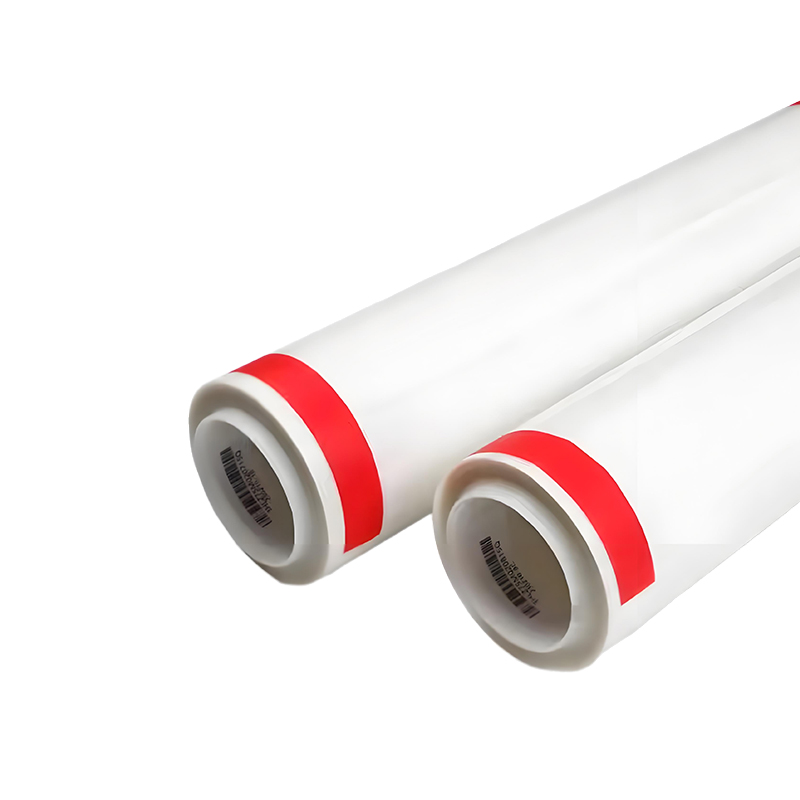
Looking For an Affordable Price from Factory Wholesale – Global Free Shipping!
Why PreproPPF Clear Paint Protection Film (6.5mil PR-Q01)
Key Benefits:
- Durable 6.5mil TPU Film – Ideal thickness for daily driving protection
- Scratch-Resistant & Self-Healing – Minor swirls disappear with heat
- High Gloss Finish – Enhances original paint shine without discoloration
- UV & Yellowing Resistant – Long-lasting clarity, even under sun exposure
- Easy to Install – Flexible and stretchable for full-coverage wrapping
- Cost-Effective Quality – Excellent performance at true factory price
Direct from China PPF Factory
We are PreproPPF, a professional Paint Protection Film manufacturer in China. We ship globally at wholesale prices and provide FREE door-to-door delivery – no hidden fees, no middlemen.
Why PPF Materials Matter
Choosing the right paint protection film material isn’t just a technical decision—it’s a long-term investment in your vehicle’s aesthetics and resale value. From understanding the PPF composition to knowing the differences between TPU vs PVC in paint protection film, this knowledge empowers you to protect your car the smart way.
Frequently Asked Questions (FAQ)
1. What is paint protection film made of?
Most high-quality PPFs are made of TPU (Thermoplastic Polyurethane) and include self-healing topcoats and UV-resistant layers.
2. Is PPF better than ceramic coating?
Yes, if you’re looking for impact resistance. Ceramic coatings offer chemical protection and hydrophobicity, but not physical defense.
3. How long does PPF last on a car?
A high-end TPU film can last 5–10 years with proper care.
4. Can I install PPF myself?
Technically yes, but professional installation is recommended due to precision cutting, alignment, and stretching.
5. Does PPF yellow over time?
Cheap PVC-based PPFs can yellow, but premium TPU-based films have UV stabilizers to prevent discoloration.
